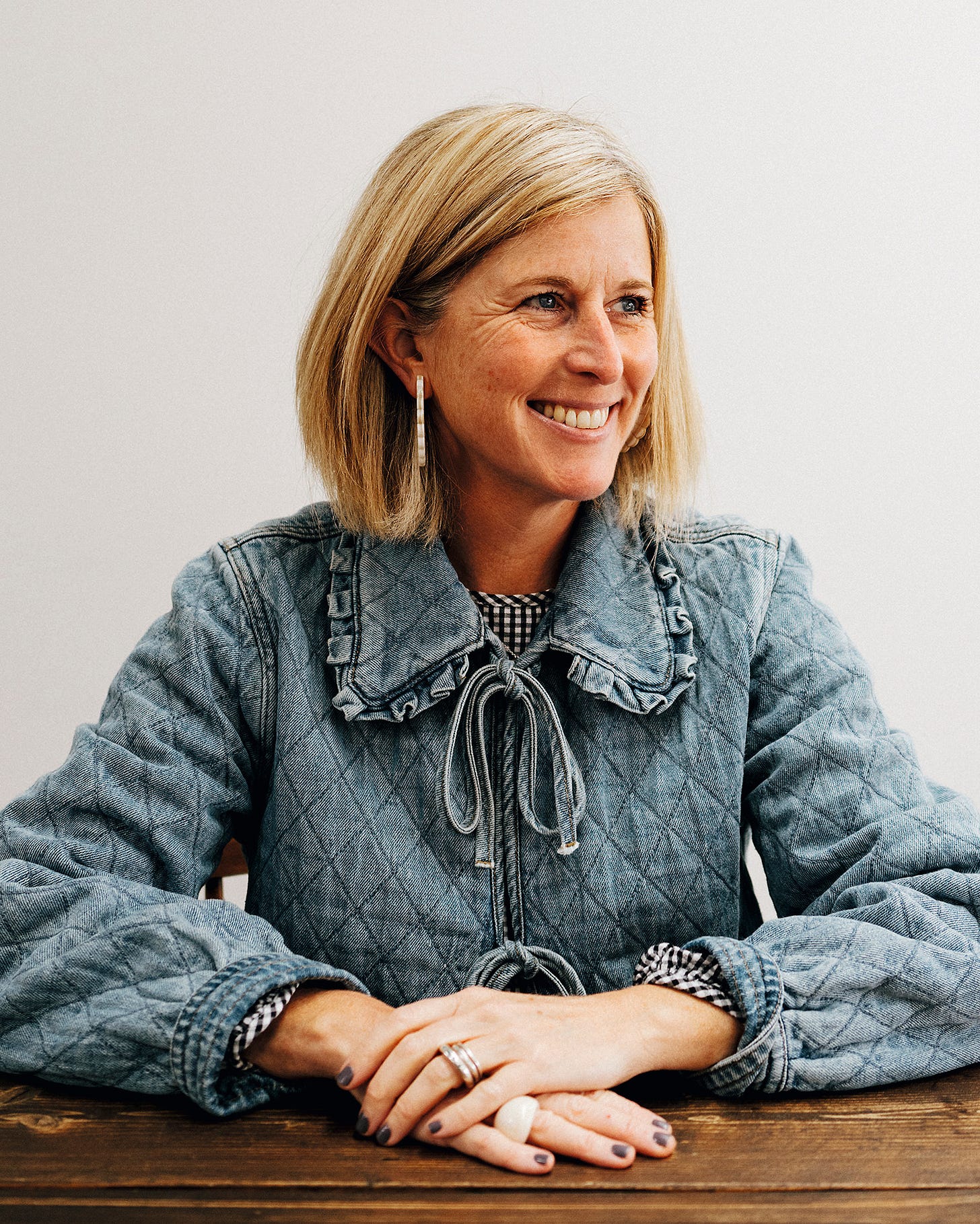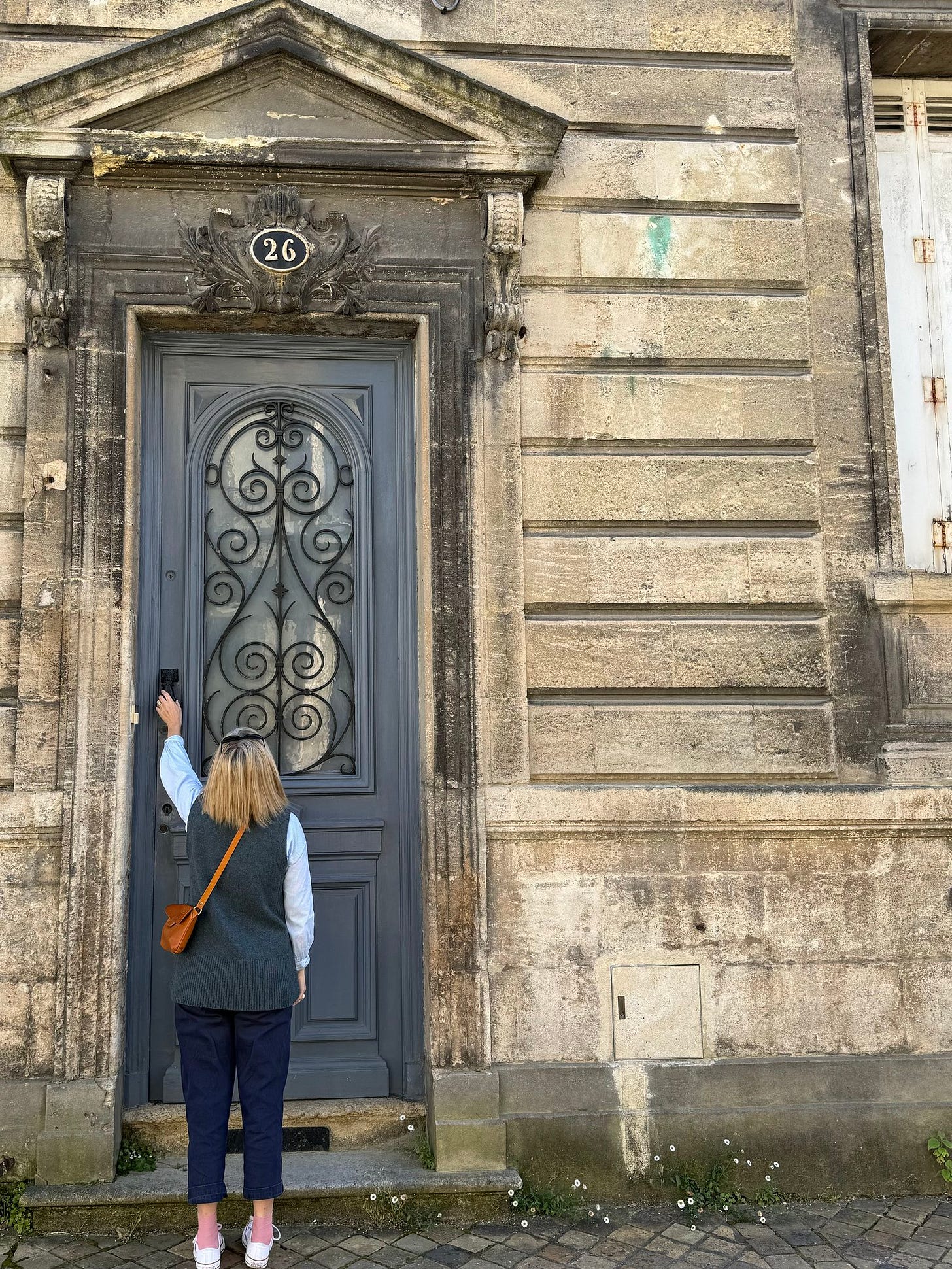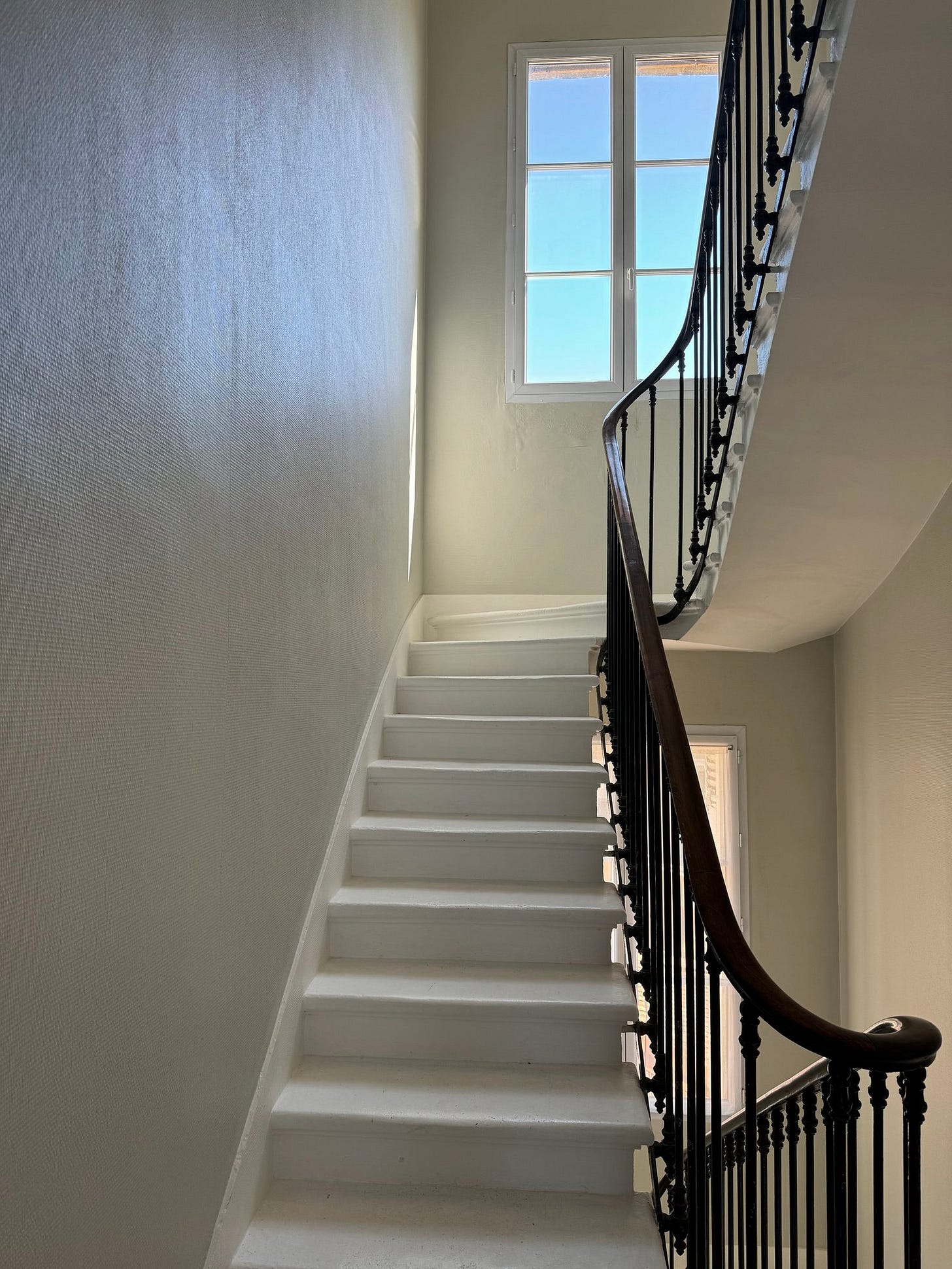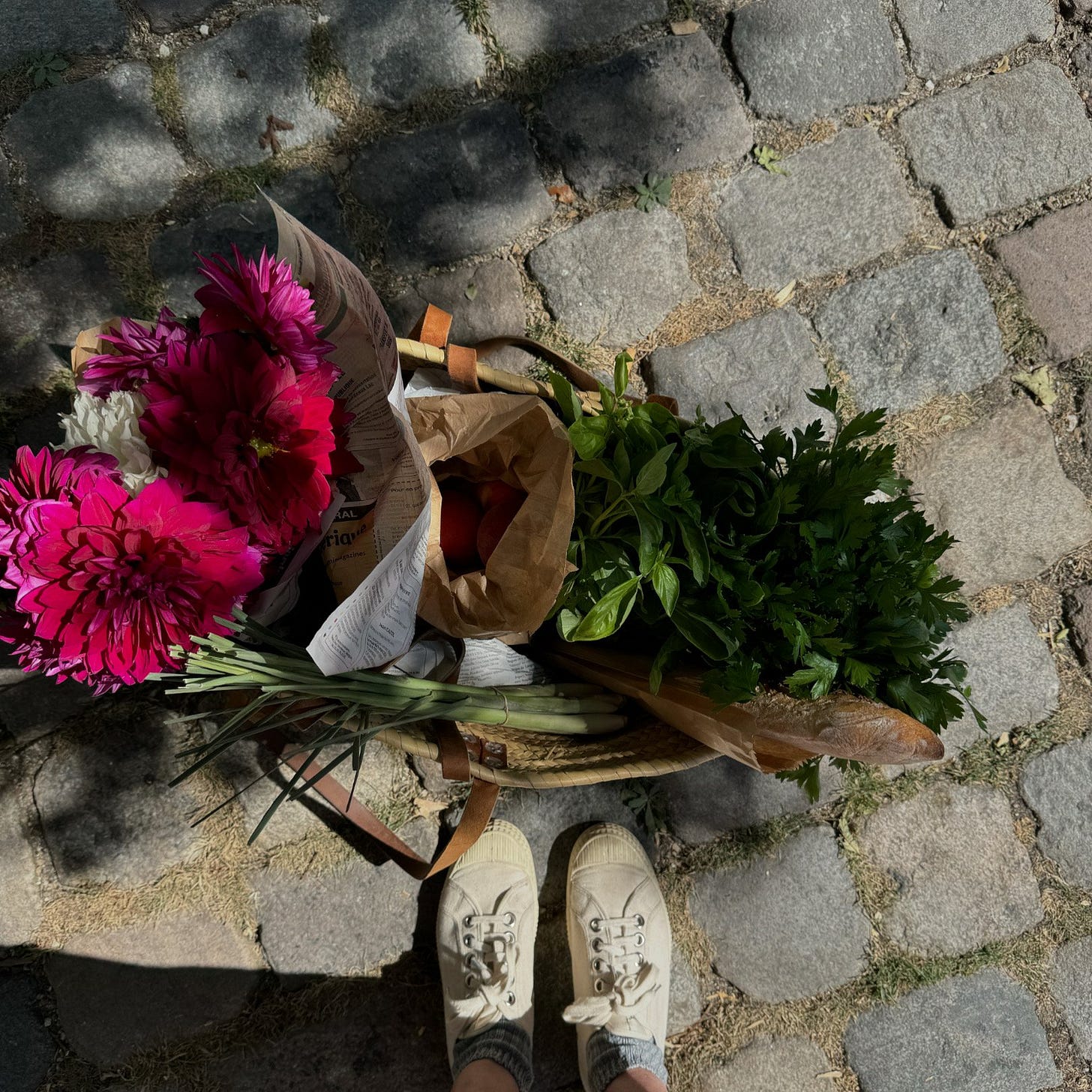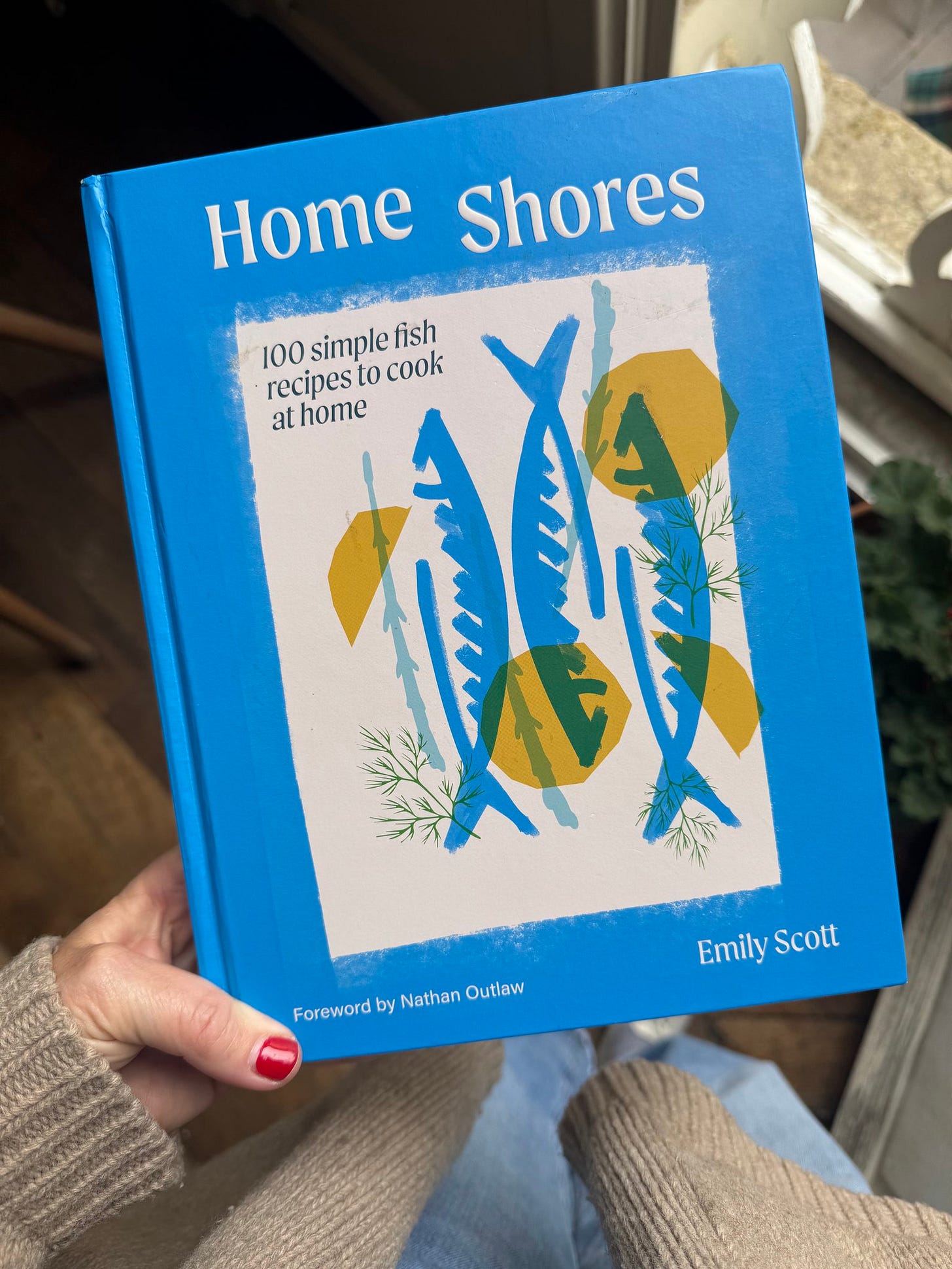Welcome to At the Table With, a new interview series where I invite fellow French cooks and creatives—whether native or adopted—to join me at my table for conversations about all things related to French food and lifestyle. Together, through their voices and stories, we'll explore the many rich facets of French living—from Brittany to the French Riviera—and how locals savor everyday life: one meal, ritual, and moment at a time.
Today’s guest is Emily Scott — a celebrated British chef and cookbook author whose love for the sea and seasonal cooking has shaped a truly distinctive culinary voice. Originally from Cornwall, Emily is now based in Bordeaux, France, where she continues to bring her signature coastal sensibility to everything she does. Over the years, she has helmed some of Cornwall’s most beloved kitchens and has published three beautiful cookbooks: Sea & Shore, Time & Tide, and her most recent, Home Shores — each one a heartfelt tribute to simple, seasonal living by the sea.
Emily now splits her time between France and the Cayman Islands, where she serves as executive consultant chef. Her work has earned her numerous accolades, including being named Best Chef by South-West Food Magazine and twice listed among the top 100 most influential women in hospitality.
I first came across Emily’s work through her Substack newsletter, Shore to Shore, and was immediately captivated by her calm, thoughtful approach to cooking.
Now that Emily has recently moved to Bordeaux, I was curious to learn more about this new chapter — how she’s settling into French life, what’s inspiring her in her new surroundings, and of course, her favorite places to eat, shop and explore.
In this conversation, Emily opens up about her life in Bordeaux, the ingredients she’s loving right now, and how her culinary journey continues to evolve. Whether you’re planning a visit to southwest France or simply love stories of food, place, and creative reinvention — this one’s for you.
Audrey Le Goff: Can you share with us your experience of moving to France? What inspired the move? How did you end up in Bordeaux specifically, and what were your biggest surprises or challenges? Any tips for others dreaming of doing the same?
Emily Scott: Moving to France was less of a decision and more of a pull, like the way the sea calls you back when you have been away too long. There is something about the pace of life here, the rituals and routines.
The inspiration? A longing for simplicity, connection, and flavour not just on the plate, but in life. After years rooted in Cornwall, with its rugged beauty and windswept coastlines, I began craving a new rhythm. France, with its markets, seasons, and craft and where I had spent so much time as a child seemed a natural next chapter and a culture that had been very familiar to me as a child with a French grandparent Papa.
Bordeaux found me really through Mark, who worked amongst the vines as a winemaker for 15 years. I had visited a few times and always felt a sense of ease, that felt intimate, almost like a village and always full of possibility. The architecture is honey coloured and soft in the morning light, the food markets are abundant, and the proximity to both the Atlantic and the vineyards are so close. There is a lovely honesty to Bordeaux and quiet confidence.
Of course, there have been challenges. My French is far from perfect, there is something humbling and beautiful about being slightly out of your depth, depending on how I feel. It forces you to listen more, to slow down, to find joy in small wins. Simply everyday things like ordering at the boulangerie without a pause, or finally understanding a neighbour’s joke.
My advice to anyone dreaming of doing the same? Let yourself be drawn by what you love. Start with the food, the markets, the seasons, and the wine. Learn the language slowly, with patience. Do not be afraid to be a beginner, it is how you will learn. And most of all, give yourself time to truly settle into France, that is where the magic lies.
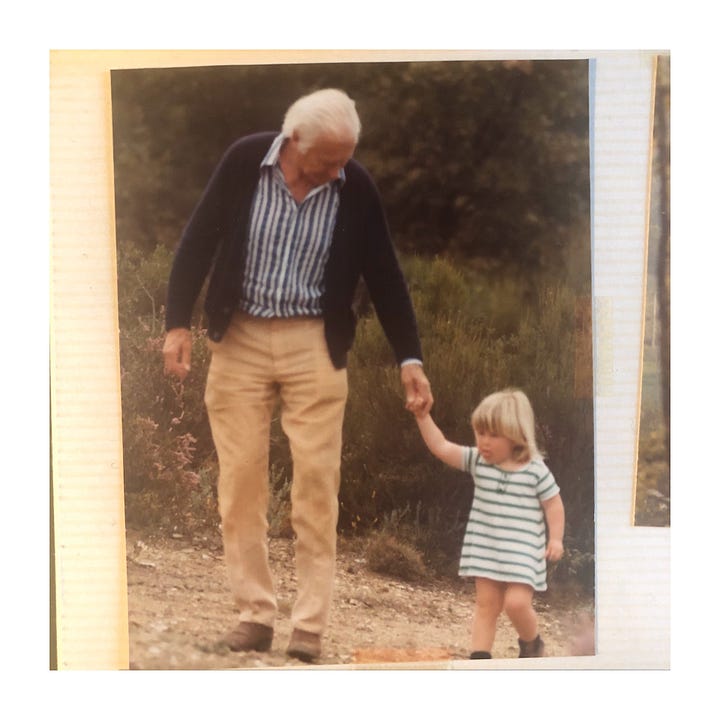

ALG: Since you’re a “Bordelaise” now, can you share with us some of your favorite addresses, local markets or producers in the area?
ES: Now that I call Bordeaux home, I have found a rhythm in the city, little rituals and places that make everyday life feel quietly extraordinary. There is a beauty to finding “your” people and places, those you return to week after week. Marché des Capucins is the heartbeat of my weekends, bustling, a little chaotic, but full of life. I always go early, with a basket, my list which I always deviate from depending on what is on offer. The oysters from the Arcachon basin, shucked fresh and served with a glass of crisp white Bordeaux. It has become a ritual. You can feel the sea in them. For produce, I often seek out Recharge, a small market store, all local produce that brings the seasons to my table. La Pelle is where I go for coffee. They roast their own coffee in Bordeaux. For bread, it has to be Le Petit Boulangerie in Chartrons; their pain au levain is robust, slightly tangy, and utterly satisfying. Paired with salted French butter and radishes from the market is heaven.
ALG: What’s a typical food day like for you in Bordeaux? From breakfast to dinner—give us a little taste.
ES: A typical food day in Bordeaux simply flows with what feels right, and a laid backness that reminds me of Cornwall. There is a softness to the days here, and food becomes the thread that gently weaves them together. Bonjour! Morning starts simply. I like quiet mornings, windows open, light filtering through. Breakfast is usually a slice of pain au levain from Le Petit Boulangerie, toasted, with salted butter and perhaps a spoonful of local honey or apricot jam in summer. Always a coffee from Le Pelle, rich and aromatic sipped slowly. It is not rushed; a pause before the day begins.
Mid-morning might mean a wander through Marché des Capucins or Marché des Chartrons. If it is a weekend I will pick up whatever looks most beautiful. Strawberries still warm from the sun, a little chèvre, bunches of basil, or the first courgette flowers of the season. Inspiration starts here.
Lunch is usually simple but generous. A salade tiède (warm salad) may be roasted vegetables with lentils and a dollop of fresh goat cheese, or tomatoes sliced thick with olive oil, sea salt, and torn herbs. Always some good bread. If I have guests, I might do a tarte fine with market vegetables and a green salad with mustard vinaigrette. A glass of chilled rosé or a light Bordeaux Blanc is never far off.
Afternoons are quieter, often filled with writing, recipe testing, or planning. But there is usually a small pause for something sweet: perhaps a square of dark chocolate or a canelé that is a caramelised, custardy Bordelais classic. With a second coffee, naturally.
Supper depends on the season. In colder months, something comforting, a slow-cooked daube de boeuf, or roasted chicken with garlic and thyme. In summer, it is always grilled fish from the coast, served simply with lemon and olive oil, maybe a warm salad of potatoes, capers, and green beans. Pudding might be a few slices of ripe peach or, if we have friends around, a clafoutis made with cherries or figs. Always supper is shared. Around the table, with conversation, wine, and time. That is what life in Bordeaux teaches you: food is not just about eating. It is about being present. Something I learnt from my French grandfather Papa growing up and has inspired the way I cook and live.
Where do you look for inspiration as a food writer living in France? Are there specific places, people, or flavors that are fueling your creativity right now? Has the slower pace of French life influenced your approach to meals or food writing?
ES: Inspiration, since moving to France, life has become something quieter, more rooted in rhythm than in rush. It no longer feels like something I chase, but rather something I let in. It comes through the everyday, the kind of beauty you might miss if you are not paying attention. Like Cornwall I rush slowly.
Markets remains my greatest muse. Standing at a stall in Marché des Capucins, watching the seasons unfold in colour and scent, white asparagus giving way to blushing peaches, then on to wild mushrooms and dusky figs. It is endlessly inspiring. The stallholders know their produce intimately, and I have learned so much by simply listening, tasting and smelling.
I find myself drawn, too, to the countryside outside Bordeaux, the vineyards of Saint-Émilion in late afternoon light, or the salt marshes of the Médoc. The landscape here has its own language. The Atlantic, just an hour away, is a place I am drawn to like Cornwall raw, wild and life enhancing. The oysters from Cap Ferret, the aroma of grilled sardines on the coast, they all find their way to my table and writing.
People fuel my work more than anything. Conversations with local cheesemongers, winemakers, or cooks who have cooked the same clafoutis for 40 years. These moments remind me that food is not just about ingredients it is about memory, heritage and love. Lately, I have been inspired by the pace. The slower cadence of French life has gently reshaped the way I write and eat. Meals are no longer something to “fit in.” They are a punctuation mark in the day, a pause, a pleasure, a way of marking time with gratitude. In this season, I am particularly drawn to humble dishes: a lentil salad dressed with shallots and mustard, a pear poached in red wine, a loaf of bread warm from the oven. In my true style, it is always simple.
ALG: Are there any French ingredients you can’t believe you ever lived without? Likewise, any French food or drink you still haven’t warmed up to?
ES: Ingredients I love in Bordeaux - A quiet celebration of what the land and sea offer here. There is something grounding about cooking with what surrounds you when the ingredients mirror the place. In Bordeaux, I have fallen in love with ingredients that feel honest, expressive, and full of character.
White asparagus in Spring - tender, delicate, often steamed and served with a buttery vinaigrette or a soft-boiled egg. A true sign the seasons are turning.
Duck, whether confit or seared, is rich and soulful. Often paired with prunes or cherries in summer, or lentils and thyme when the air cools.
Tomme de brebis cheese from the Basque country nearby, nutty, slightly sweet, perfect with quince paste or a drizzle of honey.
Line-caught hake (merlu), gently roasted or poached, often with a saffron sauce or fennel from the garden. Clean, elegant and a taste of the nearby coast.
Grapes from the Médoc - not just for wine, but fresh at the market in early autumn - dusty-skinned and bursting with sweetness.
Pink garlic from Lautrec aromatic and floral, I use it to perfume everything from roast chicken to slow cooked beans.
Salted butter with sea salt crystals always spread on sourdough or melted into a sauce, it is the sort of ingredient that reminds you how good simple things can be and always reminds me of my Dadio.
Flat peaches and Charentais melons in summer are juicy, perfumed, best eaten cold from the fridge on a hot afternoon. Nothing better.
Puy lentils and chickpeas are humble and sustaining. I often cook them with bay leaves, shallots, and a glug of good olive oil, then toss with whatever the market offers that day.
Oysters from Cap Ferret, briny and tasting of the sea, eaten with a squeeze of lemon and a glass of crisp white. A taste of the Atlantic.
As for the things I have not quite embraced I will admit, andouillette. There is something very bold about it, intensely savoury, unapologetically rustic and while I respect the craftsmanship it is just not for me. I also struggle a little with pastis, that anise-scented apéritif. In cooking, yes… but not for me as an apero.
ALG: Do you find any culinary crossovers between British and French coastal traditions? Given your background, are there ingredients or techniques that resonate in both cultures? Are there culinary habits from the UK you still hold onto?
ES: Yes, absolutely! There is a quiet kinship between British and French coastal cooking that I have come to appreciate more deeply since living here. At first glance, they may seem quite different, one more rustic, the other more refined but both traditions are anchored in the same values: seasonality, simplicity, and respect for the sea.
Coming from Cornwall, I have always cooked with what is fresh and local, fish pulled from the harbour that morning, sea herbs gathered at low tide, potatoes still muddy from the field. In southwest France, it is the same spirit. Here, you might find hake, turbot, or mussels instead of pollock or crab, but the reverence for what the ocean offers is shared.. A grilled fish with lemon and olive oil in Cap Ferret is not so different in heart from a wood-fired mackerel on a Cornish beach.
Butter and cream both countries love them, though the French may lean more heavily into sauces while the British let them shine in baking and puddings. But the comfort they bring, the richness they offer to humble ingredients that translates across borders.
There are also shared techniques I adore like poaching fish in broth or milk, roasting root vegetables simply, or baking with a deep sense of nostalgia. A French tarte aux pommes is not so far from an English apple crumble in sentiment both speak of home, of warmth and nostalgia. Of course there are British routines I love deeply. Tea, of course, around 4 o’clock sometimes with a slice of cake, sometimes just a quiet pause. Nursery puddings always like crumble.. I have brought it with me and often share it with my french friends, swapping in local fruit like figs or Mirabelle plums. A Cornish tradition of course are scones, when made properly light, buttery, just the right side of crumbly, still have a place in my kitchen. Served with French crème crue and a spoonful of jam from the market, it is a beautiful meeting point of both cultures.
So yes, I believe the coastline speaks the same language, whether in Cornwall or Cap Ferret. It is in the salt air, the soft light, the rhythm of the tides and the food that brings us together.
ALG: You recently released your third cookbook, “Home Shores: 100 fish recipes to cook at home”. As a Brittany native who grew up on fish and shellfish, this cookbook really speaks to me! Can you tell us more about the inspiration behind this book? Why did you want to focus solely on fish and shellfish? If someone wants to start cooking more fish at home, what’s your go-to advice?
ES: With “Home Shores” I wanted to write a book entirely focused on fish and shellfish. To share how I cook and what I love about cooking fish - the seasonality, provenance and simplicity. There is also a lot of hesitation around cooking fish at home and I wanted to demystify this, the simple joy of a piece of perfectly cooked fish shared around a table. I grew up near the coast, and the sea has always been my compass. Moving between Cornwall and now France, that connection has only deepened.
“Home Shores” is about confidence and comfort. It is not cheffy or intimidating. It is fish for real life, a midweek traybake of lemon sole and fennel, a pot of mussels with crusty bread, or grilled sardines eaten outside with a squeeze of lemon and cold glass of white wine.
If someone wants to start cooking more fish at home, here is what I think and feel. Start simple. Choose one fresh, sustainable fish you like, maybe haddock, gurnard, or hake and learn to cook it in two or three different ways: pan-fried, baked, or gently poached. Keep the flavours simple: good olive oil, lemon, herbs, a little butter. Build trust with a local fishmonger. Ask questions. Get them to prepare it for you. Ask what has just come in, how they would cook it. When you buy fish that is in season and well cared for, it makes all the difference and you will start to notice how the sea changes through the year. Do not be afraid of cooking fish on the bone. For now, roast a whole fish with garlic and thyme. The flavour is better, and it teaches you respect for the ingredient. Fish does not need fussy sides. Think crushed potatoes with olive oil, a green salad, seasonal vegetables simply dressed. Writing Home Shores was challenging as it is a big subject. I hope it inspires others to bring the sea a little closer to your own kitchen.
ALG: If you had to pick just one favorite recipe from the cookbook, which one would it be—and why?
ES: So for me not a recipe, but a whole chapter….The tinned fish chapter in Home Shores holds a special place in my heart; it is a quiet celebration of something humble, practical, and yet utterly magical.
Tinned fish feels like a little time capsule of the sea, preserved at its peak, ready to transform any recipe with just a pop of the lid. In so many ways, it bridges the gap between everyday life and the extraordinary. I love that tinned fish invites creativity without fuss. You can scatter it over a salad, mash it into rillettes, fold it into a pasta, or simply enjoy it on good bread with a squeeze of lemon. It is an ingredient that encourages improvisation, making cooking feel approachable and joyful.
There is also a strong connection to tradition and craft here. Many of the tins come from coastal communities with generations of knowledge, where preserving fish is an art form in itself. By celebrating tinned fish, the book nods to those hands and stories to the rhythm of the tides, the catch, and the careful preservation that stretches food across seasons.
Thank you so much Emily for sharing this moment with us!
And to finish on a delicious note, Emily is kindly sharing with us a recipe (for paid subscibers) for Oysters Mignonette (for paid subscribers). Bon appétit !
Keep reading with a 7-day free trial
Subscribe to A Table in France to keep reading this post and get 7 days of free access to the full post archives.






